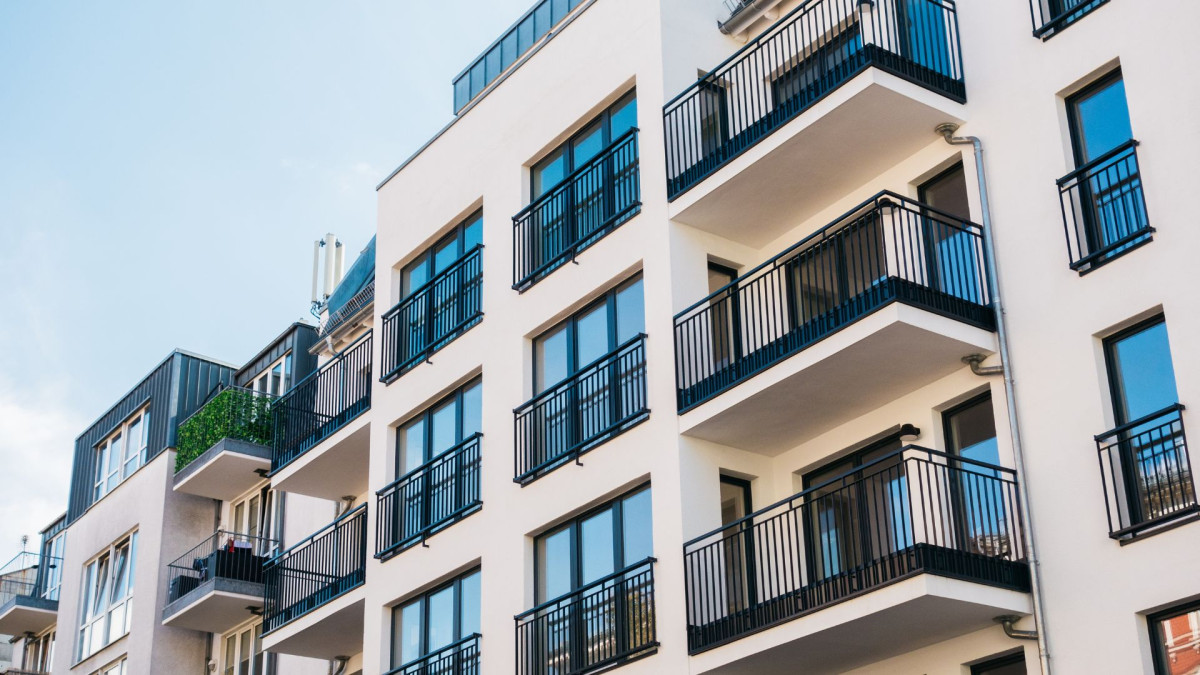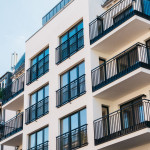Understanding WiFi Router Placement
In today's digital age, WiFi routers have become an indispensable part of everyone's lives. They provide people with the means to connect their devices wirelessly to the internet, enabling seamless communication, entertainment, and work. However, the convenience and performance of your WiFi network depend heavily on one critical factor: the placement of your router.
Importance of Router Placement
The location of your WiFi router is a fundamental aspect of ensuring optimal performance. Think of your router as the heart of your wireless network. It sends out signals in all directions, just like the heartbeat that keeps you alive. But, if it's hidden away in a remote corner of your home or tucked behind furniture, it's like having a heart that can't efficiently pump blood to all parts of your body. In this case, it struggles to transmit its signal effectively, leading to slower internet speeds and frustrating dropouts.
To prevent these issues, you need to strategically place your router where it can reach all corners of your house, reducing dead spots where the signal is weak or non-existent. By doing so, you ensure that all your devices, whether in the bedroom, living room, or even the backyard, can access the internet with ease.
Factors Affecting Router Performance
Several factors can influence how well your router performs. Understanding these factors empowers you to make informed decisions about its placement.
First, consider physical obstructions. Walls, floors, and ceilings can all impede the WiFi signal. The thicker and denser these structures are, the more challenging it becomes for the signal to penetrate them. So, placing your router in a central location, preferably on the same floor as most of your devices, helps to minimize these obstacles.
Next, think about interference. Your router operates on a specific frequency, and so do many other devices in your home. Things like microwave ovens, cordless phones, and even some baby monitors emit signals on similar frequencies to your router. When these signals overlap, they can cause interference, leading to a weaker connection. To mitigate this, keep your router away from such devices and try to choose a less congested WiFi channel.
Additionally, the distance between your router and your devices matters. The farther a device is from the router, the weaker the signal it receives. If possible, position your router in a location that's closer to where you use your devices most frequently.
Common WiFi Signal Interference
While understanding the importance of placement and the factors affecting router performance is crucial, it's equally essential to be aware of common sources of WiFi signal interference.
One common interference source is neighboring WiFi networks. If multiple networks in your vicinity operate on the same channel as yours, they can interfere with each other. To avoid this, consider changing your router's channel to one with less congestion.
Electronic devices like baby monitors, Bluetooth speakers, and even older cordless phones can also disrupt your WiFi signal. These devices emit signals in the same frequency range as your router, potentially causing interference. To minimize this, keep your router away from such devices or upgrade them to newer models that use different frequency bands.
Believe it or not, even seemingly innocuous items like mirrors and fish tanks can reflect or absorb WiFi signals. So, when positioning your router, take into account the presence of such objects that might interfere with signal propagation.
Streamlining Bulk Internet Services with MDU Datacom
For property owners and managers looking to provide reliable internet services to their tenants, partnering with a reputable bulk internet service provider like MDU Datacom can be a game-changer. By choosing such a provider, property owners not only ensure seamless WiFi router placement and optimal coverage but also gain access to expert solutions that enhance resident internet experiences. MDU Datacom specializes in delivering high-quality telecom services to multifamily residential communities, making it easier for property owners to streamline operations and deliver top-notch connectivity to their tenants. With the right provider, achieving optimal coverage and performance in 2023 becomes a simplified and efficient process for everyone involved.
Choosing the Right Location for Your Router
Ensuring that your WiFi router is positioned in the optimal location is paramount to enjoying fast and reliable internet throughout your home. This section delves into the nuances of finding that perfect spot for your router, guiding you through the steps to maximize your WiFi signal's reach and quality. Learn more helpful internet and WiFi optimization tips here.
Centralizing Your Router
The key to robust WiFi coverage is centralization. By placing your router at the heart of your home, you create an environment where the signal can radiate evenly in all directions. This means positioning it in a spot that's as equidistant as possible from the areas where you use your wireless devices the most. By doing this, you're essentially creating a hub from which the WiFi signal can easily reach every corner of your home. It's also worth noting that the elevation of your router can make a difference. Keeping it slightly elevated, perhaps on a shelf or a piece of furniture, can help improve signal distribution.
Avoiding Physical Obstructions
Physical barriers are a common hindrance to WiFi signals. Walls, floors, and large pieces of furniture can attenuate the signal strength, leading to weaker connections or dead zones. To overcome this, carefully choose a location for your router that minimizes the number of obstacles it needs to penetrate.
Avoid placing your router behind thick walls, cabinets, or other obstructions. Ideally, it should have a clear line of sight to the areas you want to cover. If that's not possible, consider using WiFi extenders or mesh systems strategically placed throughout your home. These devices work in tandem with your main router to extend the network's reach and eliminate dead spots.
Furthermore, be mindful of electronic devices that emit electromagnetic interference, such as cordless phones, microwave ovens, and Bluetooth speakers. These can disrupt your WiFi signal and lead to connectivity issues. Keep your router away from such devices to minimize interference.
Considering Signal Strength and Range
While central placement is essential, you must also factor in signal strength and range. Homes come in various sizes, and some may have multiple floors. In larger or multi-story homes, a single router may struggle to provide consistent coverage in every nook and cranny.
To address this, you can use additional hardware like WiFi extenders or a mesh WiFi system. These solutions work in conjunction with your primary router to amplify the signal and ensure comprehensive coverage. When selecting these devices, pay attention to their compatibility with your router and choose ones that suit the size and layout of your home.
Additionally, regularly updating your router's firmware is crucial to maintaining optimal performance. If you find that your WiFi network frequently experiences slowdowns or signal drops, it may be time to consider upgrading to a more powerful router.

Optimizing Router Position for Different Home Layouts
Homes come in all shapes and sizes, and each presents its unique challenges when it comes to optimizing WiFi coverage. This section explores the nuances of positioning your router to suit different home layouts, whether you reside in a single-story house, a multi-dwelling unit (MDU), or a compact apartment. By tailoring your router's placement to your specific living situation, you can ensure that your WiFi signal reaches every corner of your home with consistency and reliability.
Single-Story Homes
Single-story homes offer a relatively straightforward environment for optimizing WiFi coverage. In such spaces, the primary goal is to achieve uniform coverage across the entire living area. To accomplish this, centralizing your router remains a priority. Position it as close to the center of your home as possible to ensure that the WiFi signal radiates evenly in all directions.
It's worth noting that placing your router near external walls or in corners should be avoided. Such locations can limit the distribution of the signal and may result in weaker connections in certain areas of your home. If you have a particularly large single-story residence, consider using WiFi extenders or a mesh WiFi system. These devices can extend the reach of your network, eliminating potential dead zones and providing a consistent connection throughout your home.
Multi-Story Homes
Multi-story homes introduce additional challenges to achieving optimal WiFi coverage. In such dwellings, the central placement of the router remains crucial. However, due to the vertical nature of multi-story homes, you must also consider how the signal travels between floors.
A recommended approach for multi-story homes is to position the router on the upper floor. This placement maximizes signal strength on both levels. Keep in mind that flooring materials and other structural factors can affect signal propagation. Wooden floors, for example, allow for better signal penetration than concrete or metal structures.
For larger multi-story homes, a single router may not provide adequate coverage. In such cases, a mesh WiFi system is highly beneficial. Place one mesh node on each floor to ensure comprehensive coverage. This strategy eradicates the frustrations of weak signals in specific parts of your home, such as basements or top floors.
Apartments and Small Spaces
In apartments and small living spaces, optimizing WiFi coverage is relatively straightforward. Centralization of your router remains essential, but the layout and size of these spaces often pose fewer challenges than larger homes.
To achieve effective coverage, position your router centrally within your apartment. Be mindful of physical obstructions and sources of interference, such as neighboring WiFi networks. Since apartments are typically situated in close proximity to other residences, adjusting your WiFi channel settings to minimize interference can significantly enhance signal quality.
Additionally, consider using the 5 GHz band, which offers less interference and higher data transfer rates compared to the 2.4 GHz band, especially if you live in a densely populated area with many WiFi networks.

Advanced Tips for Enhanced WiFi Coverage
Achieving optimal WiFi coverage goes beyond just router placement. This section explores advanced tips and techniques to boost your WiFi signal, enhance its performance, and troubleshoot common issues that may arise in your home WiFi network.
Using WiFi Extenders and Mesh Systems
For those seeking extended coverage beyond what a single router can provide, WiFi extenders and mesh WiFi systems are invaluable tools. WiFi extenders, also known as repeaters, amplify the signal from your router and rebroadcast it to reach areas that might have weak or no signal at all. They can be particularly useful in larger homes or spaces with challenging layouts.
Mesh WiFi systems take things a step further. They consist of multiple nodes that work together to create a seamless network. Each node communicates with the others, ensuring that you have consistent coverage throughout your home. This is especially beneficial for multi-story homes or residences with numerous devices, as it eliminates dead zones and slowdowns.
Customizing Router Settings for Performance
Many routers come with a range of customizable settings that can significantly impact performance. Accessing your router's settings interface allows you to fine-tune various parameters. One important setting to consider is the WiFi channel. Routers operate on specific channels, and overcrowding on a particular channel can lead to interference and slower speeds. Experimenting with different channels to find the one with the least interference can improve your signal quality.
Quality of Service (QoS) settings allow you to prioritize certain devices or applications on your network. This ensures that critical activities like video conferencing or online gaming receive the most bandwidth, preventing other less important tasks from slowing them down.
Additionally, consider updating your router's firmware regularly. Manufacturers release firmware updates to improve performance, security, and compatibility. Keeping your router up to date ensures you're benefiting from the latest enhancements.
Monitoring and Troubleshooting WiFi Issues
To maintain a healthy WiFi network, it's essential to monitor and troubleshoot any issues that may arise. There are several tools and apps available that can help you assess your network's performance. These tools can provide insights into signal strength, connected devices, and potential sources of interference.
When troubleshooting WiFi issues, start by identifying the problem. Slow speeds, frequent disconnects, or dead zones may have different underlying causes. Common issues include interference from neighboring networks, outdated firmware, or even hardware problems. Addressing these issues promptly can lead to a more stable and faster connection.
If you're experiencing persistent WiFi problems that you can't resolve on your own, consider seeking professional assistance from your Internet Service Provider (ISP) or a qualified technician who can diagnose and fix more complex issues.

Maintaining Optimal WiFi Performance
Once you've established an efficient WiFi setup, the work doesn't stop there. This section delves into the importance of ongoing maintenance and future-proofing your WiFi network to ensure it continues to perform at its best over time.
Regular Router Maintenance
Just like any other piece of technology, your WiFi router requires regular maintenance to function optimally. Start by keeping the router's firmware up to date. Manufacturers release firmware updates to address security vulnerabilities, improve performance, and add new features. Check your router's settings interface or the manufacturer's website periodically to see if updates are available and install them promptly. It's also a good practice to reboot your router from time to time. This simple action can help clear any temporary glitches or memory buildup, potentially improving overall performance.
Additionally, consider the physical condition of your router. Dust and overheating can affect its performance. Ensure that the router's ventilation is unobstructed, and clean it periodically to prevent dust buildup. If your router has external antennas, make sure they are in good condition and properly connected.
Future-Proofing Your WiFi Setup
WiFi technology is continuously evolving, and it's wise to future-proof your setup to ensure it remains compatible with emerging standards. When purchasing a new router, look for one that supports the latest WiFi standards, such as Wi-Fi 6 (802.11ax). These standards offer faster speeds, better capacity, and improved performance, particularly in networks with numerous connected devices.
Consider the needs of your household as well. If your home is becoming increasingly reliant on smart devices like smart TVs, thermostats, and security cameras, invest in a router with robust performance and advanced features to accommodate these demands.
Moreover, if your ISP offers higher-speed plans, ensure that your router can handle the increased bandwidth. Upgrading your router may be necessary to fully capitalize on the higher speeds provided by your internet plan.
Staying Informed About WiFi Technology Advancements
Staying informed about advancements in WiFi technology is essential for maintaining an efficient network. Follow industry news and updates to keep abreast of new developments. Understanding these advancements can help you make informed decisions about when to upgrade your router or adopt new technologies that enhance your WiFi experience.
Be mindful of security concerns as well. As new security threats emerge, router manufacturers release patches and updates to protect your network. Regularly check for security updates and implement them promptly to safeguard your WiFi network from potential vulnerabilities.


























